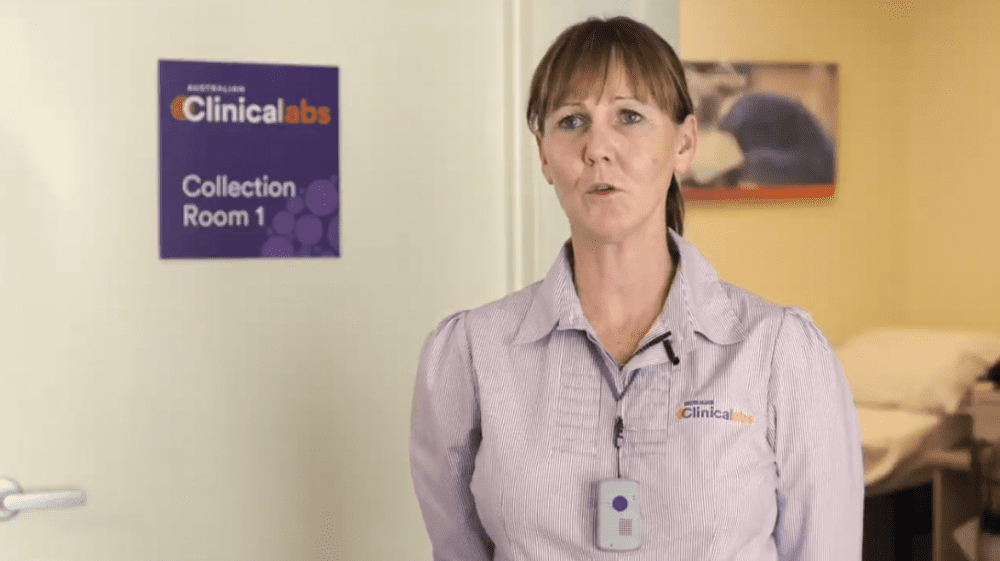
When pathology collector, Sarah, was attending to a patient one day, both were alarmed to suddenly hear aggressive and agitated behaviour outside the consultation room.
Sarah was the only member of staff on site, so she knew it was up to her to deal with the matter alone.
Both Sarah and the patient became increasingly anxious about what was going on outside the room as the consultation progressed.
Sarah was right to be worried. The statistics show that healthcare workers are the targets of Australia’s highest rates of occupational violence and aggression.
According to Worksafe, up to 95 percent of healthcare workers have experienced some form of occupational violence at work.
Incidents of occupational violence and aggression against nurses were most commonly perpetrated by patients (40 per cent), followed by patient relatives (25 per cent), patient visitors (13 per cent) and the public (4 per cent).
Duress alarms can be an important tool for lone workers, helping them remain safe and confident in their workplace.
Duress alarms are small enough that you can carry them on your person at all times at work. And they provide guaranteed, 24/7 around-the-clock emergency responses by trained professionals.
The duress alarm developed by MePACS has two-way communication, and GPS technology, so it can locate the caller wherever they may be and the response team can send the appropriate help quickly.
Once a perpetrator knows a duress alarm has been activated and emergency services are on their way, situations usually de-escalate quickly.
Duress alarms are simple to activate – users simply press a button on the device worn around their neck, enabling them to keep their eyes on the perpetrator and the situation at hand. There is no need to reach for the phone and look for contacts which can take precious time.
Sarah was well aware of the risks she faced at work, but fortunately she was wearing a MePACS duress alarm
“The risk factors working in this industry are that we’re working with the general public, we’re dealing with their vulnerabilities, anxieties,” she said.
“We’re putting ourselves into a very vulnerable situation.”
Once Sarah’s consultation was over, she went out to the waiting room and quickly realised she wouldn’t be able to manage this person’s behaviour alone.
She immediately pressed the MePACS alarm for help.
When the agitated person realised the police were on their way, they fled the scene, relieving the urgency of the situation immediately.
“We were then able to lock the door and keep ourselves safe,” Sarah said.
“It was only 10 minutes before the emergency services arrived, which was reassuring for everyone in the room.”
Like so many healthcare workers, Sarah thought first of her patients before she thought of herself.
“I had never been in a situation like that before, I was concerned for the other patients in the room,” she said.
The MePACS team provided Sarah with reassurance and confidence that she could deal with the situation.
“Once I’d pressed that button and was speaking to the MePACS response team, I felt enormous relief. They stayed on the line right until the emergency services arrived. They talked me through it.
“I felt much more reassured, more in control of the situation,” she said.
Eighty-one percent of MePACS duress alarm users say they feel safer if they are wearing the MePACS duress alarm when they are working in the community.
And 95 per cent of staff with a MePACS duress alarm also feel more positive towards their employer for investing in a device that ensures their safety. A more positive attitude towards employers can potentially mean less stress and sick leave, and overall improved staff morale.
Sarah said the incident could have made her nervous coming back to work, but knowing she had the duress alarm and response centre’s support helped her overcome any anxiety.
“It gave me reassurance to know that I could come back in the next day and work, knowing how effective it was,” she said.
Wearing the duress alarm is a fundamental part of Sarah’s workplace routine.
“The advice I give to my colleagues, is that the MePACS alarm is the first thing you put on when you walk into your office. Make sure it’s charged every day. And don’t hesitate to press that button.
“At the end of the day, you want to go home to your family, and I’m very grateful we have got the MePACS.”
For more information about the duress alarm, please contact MePACS.
Image: MePACS.